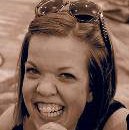- A
- A
- A

Disability3
I’ve been thinking a lot lately about what it means to be disabled, and, consequently, what it means to be a ‘good’ disabled person, a ‘not-so- good’ disabled person and when to blur those lines.
If we were to put disability in a box, what would it look like? Who is ‘disabled?’ Stereotypically speaking, a disabled person is that paraplegic sitting in his half broken wheelchair panhandling on the street corner. Maybe he’s sitting there because he would rather be there than in a nursing home, but, nonetheless, all society is willing to see is him begging for money. Disability is that man, needing more and having less. Disability is a broken wheelchair, displaying so evidently that the richest country in the world cannot provide even this man with a new wheelchair. Thus, disability, in this nice little box, often becomes about guilt to those not sitting on the street corner, and him hoping for a little more than a smile.
On the flip side, what do disabled people do when they do not want to be understood as the above person? They try to become the one that inspires you to do more. You know, the guy that has climbed Mount Everest in his wheelchair and makes you question what you have done with your two legs all weekend. When he’s outside the box, he’s a marathon wheeler and investment banker. He wants you to believe that he has it all and that, if HE has it all, so can you.
Without going any further, there is nothing wrong with being either person. Whether you’re the stereotypical disabled person or trying not to be, I am not here to criticize either. What I am here to criticize is the fact that we have a box at all. The mere fact that the highly inspirational, mountain climbing crip has to convince you that if he has it all, so can you- points out that he’s not, culturally speaking, really supposed to have it all.
But then if this inspirational guy in a wheelchair is suddenly not able to climb Mount Everest any longer, due to, let’s say, his disability getting in his way, what does he do? We often see him trying harder to “overcome his disability.” He might try to become more athletic, increasing his work out time or trying physical therapy, pushing himself further than his body will allow. It’s entirely likely that we will also see this person seek normalizing medical treatment to get rid of his disability all together- anything to not become, in societies eyes,’ the guy sitting on the corner in the broken wheelchair.
The worst of all is society’s response to a person struggling in this limbo. If he’s not able to “overcome his disability” in a fashion that inspires us all, we will often isolate him. Isolation for people with disabilities often means economically sanctioning him by refusing to hire him for employment purposes, causing him to rely on the fixed income of Social Security. Further, we isolate him by lack of accessible, integrated housing. Thus, telling him that he has to live away from the rest of society. If none of this works, and even sometimes when it does work, this person will sometimes experience hate crimes, ranging from his wheelchair being stolen to him being beaten and murdered. Which, you will note, outside of death, all of the above will put him squarely back into that box of being the object of pity on a corner.
No wonder there are so many people with disabilities that do not want to identify as having a disability at all. No matter which way you put it, having a disability identity will put you in a box, and, more than likely, a box that you don’t want to be in. But with close to 60 million people in the United States living with a disability, we have the power to reframe what that box looks like and what it doesn’t.
However, I think the first problem is in my framing it as ‘good’ disabled person versus a ‘not-so-good’ disabled person. That is definitely the message we often get, but it seems to me that it’s more about how you can fit into this box and if you are deemed ‘worthy’ of having such amenities as accessible, integrated housing and a working wheelchair.
None of us are all good or all bad. We’re all here, pumping the same blood and learning how to love. So, I encourage us all to blur the lines a little and don’t be ashamed to be the one asking for a little more than a smile and the one that’s proving them all wrong.